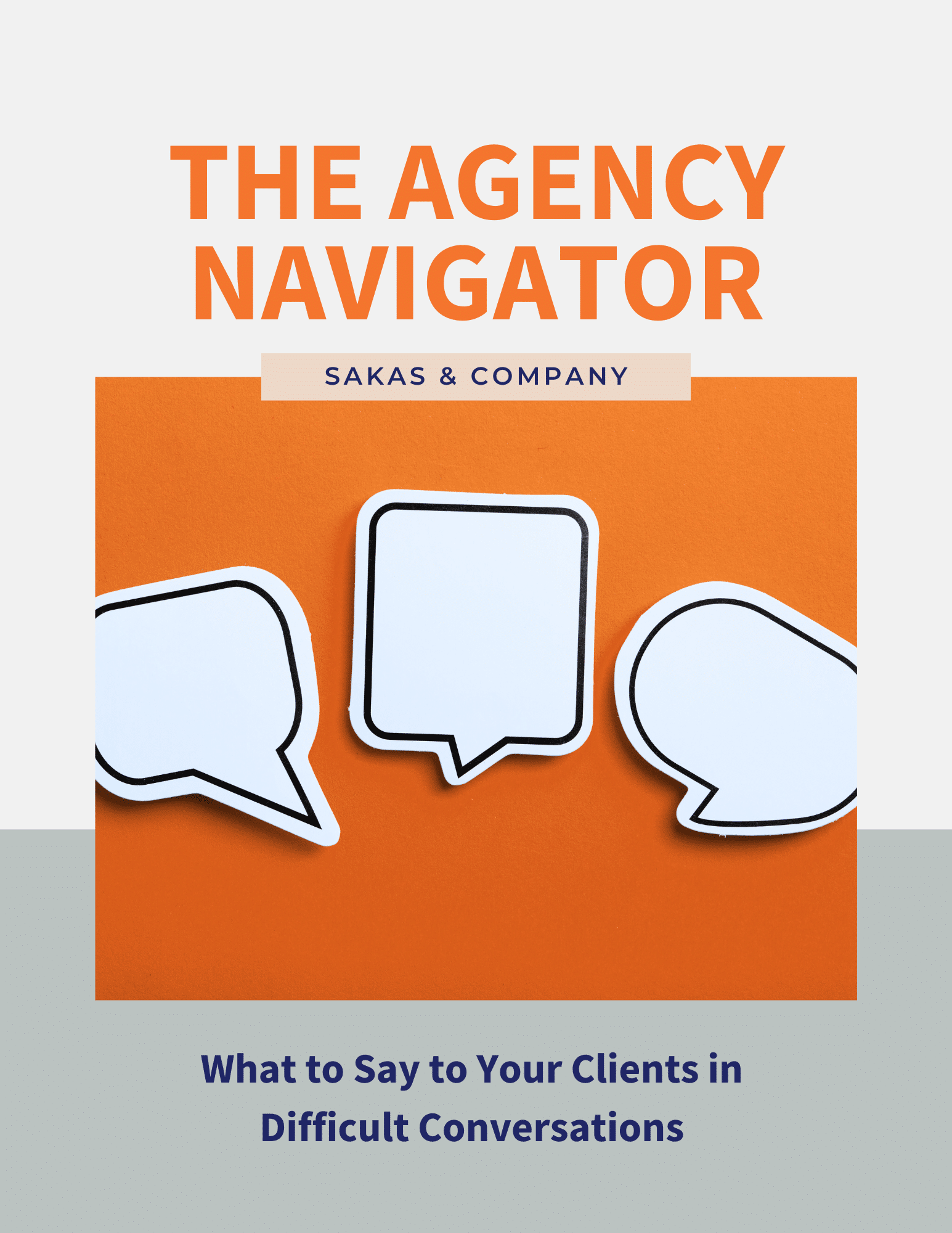A client recently asked for help handling a team morale and client service problem at his digital agency:
We keep getting new requests from old clients. They always want immediate turnaround, even if we haven’t heard from them in months. I want to be responsive but my team says they can’t get it done right away. What should we do?
First, it’s good that you’re getting requests for additional work from past clients. They’re like upsells you didn’t have to sell. Second, the whole process is easier when you and your team have a strategy, instead of making it up every time.
When an old client reappears and wants immediate help, you don’t have to drop everything to do the work. That’s just going to make you stressed out, hurt your team’s morale, and reinforce to clients that you’re order-takers instead of a strategic agency.
Instead, it’s important to set boundaries about timeline and pricing. Here’s my systems advice on creating a more strategic process for handling requests from past clients—you’ll want to customize this process for your agency.
[TEMPLATE] Cut-and-Paste Wording to Use
The biggest driver here is whether you need to speak with them before creating the estimate. I’m a fan of sales calls—instead of doing it all by email—because it helps me better understand the client’s goals.
If you need to get additional details first
Acknowledge their request and set up a followup call:
Thanks for reaching out! We’ll need some additional information to create an estimate. My PM will schedule a short call tomorrow to discuss your requirements and goals. Based on that, she’ll share an ETA on how soon we could complete the work, based on our current project queue.
If you can create an estimate without additional info
If it’s something you do frequently and you’re familiar with their current setup, you may not need to talk first. In this case, acknowledge their request, and then give them an ETA on when you’ll have an ETA:
Thanks for reaching out! Your account manager will create an estimate. He’ll get that to you by EOD Tuesday.
Benefits of “We’ll give you an estimate by X”
This “don’t do it immediately” approach creates several opportunities for your agency.
- You call out that the work is billable. If they were expecting this to be free, they’re going to say something about that.
- You call out that you’ll schedule the work after your existing projects.
- You’re buying enough time to price it accurately.
- You’re reinforcing to the client that you’re responsive—and value their business—but that they’re not your only client.
Ultimately, you’re being helpful but you’re maintaining control of the situation.
Always provide a “conditional” ETA
Ever had a client disappear after getting an estimate, and then they expect you to meet the original ETA after they reappear at the last minute? Me, too! As an agency PM, I eventually realized the importance of giving “conditional” ETAs.
That is, your ETA is never a fixed date. It’s a range that depends on several things:
- How soon they sign the SOW.
- How soon you receive the deposit.
- When we start work, based on the project schedule.
- Getting timely signoffs from them along the way.
Putting that all together, you or your account management team might say:
Once we receive the signed SOW and deposit, we’ll schedule this work. I estimate it will take 3-5 weeks to complete. The timeline would require about 5 hours/week of your time for reviews and signoffs along the way. We have an opening next week, so if you can return your deposit by EOW, we could schedule the work at our Monday production meeting.
This helps your client understand the moving parts, and it also creates urgency to get started—the sooner they commit to start, the sooner you’ll finish.
Offer a “rush rate” option if they need it faster
Your client needs you to complete the work faster than your ETA allows? Consider whether to bring in additional resources to get things done. The key is to get the client’s signoff on spending additional budget.
I recommend charging 50-100% extra for priority turnaround. For instance: “We can get it done in 4 weeks for $X. To meet your timeline of 1 week, we’d need to charge $2X. Which do you prefer?”
Speed isn’t free. If you can work faster, charge them for it.
Results when you follow this strategy
When you set boundaries and manage expectations about turnaround, you can expect several benefits:
- Clients respect you more, because you’re not just order-takers.
- Your team is less stressed, because you’re not expecting them to work overtime for every client request.
- Your profits will be higher, because you’re getting paid for new work—including a rush surcharge for faster turnaround.
Try it; you’ll like it! For more on the topic, see my article on creating a rush workflow.
Question: How do you handle new requests from past clients at your agency?


